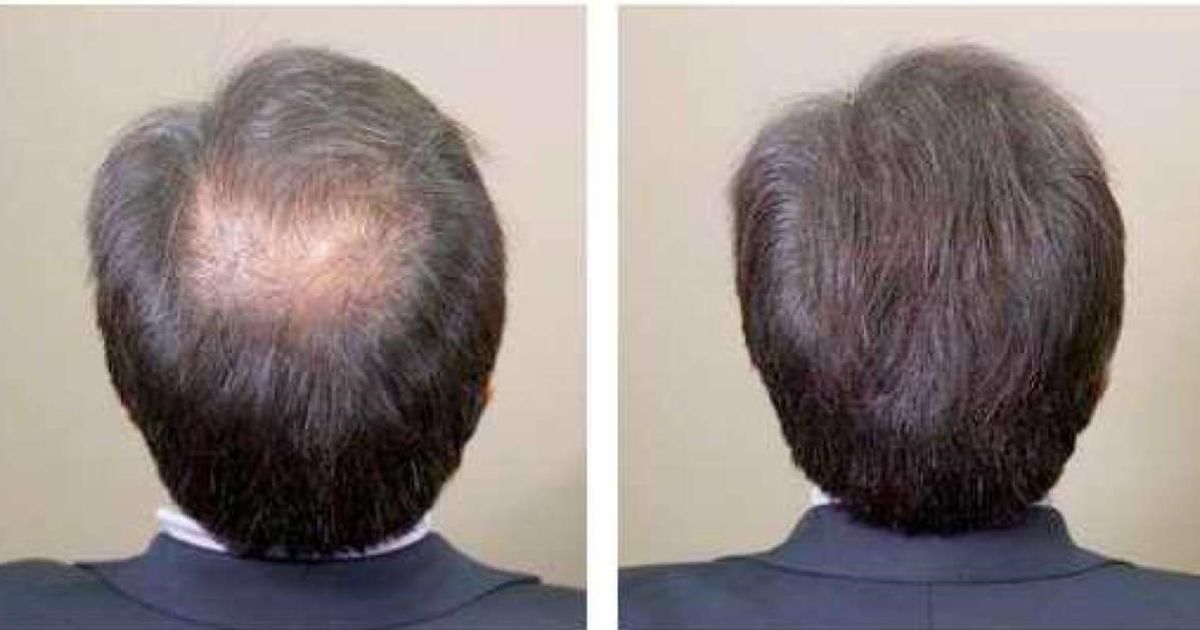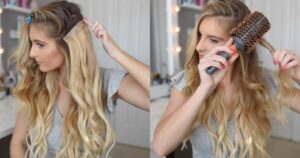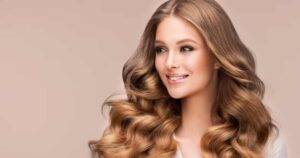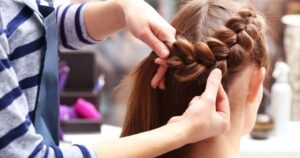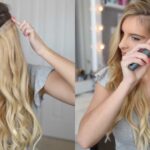If you’re using minoxidil to combat hair loss and wondering if you can still color your hair, the good news is that it’s generally safe to do so. Minoxidil primarily works on the scalp and doesn’t interfere with the color of your existing hair. However, a little caution is needed to ensure your hair dye and minoxidil application don’t mix immediately. It’s a good practice to wait for minoxidil to be absorbed into your scalp (usually about four hours) before dyeing your hair to prevent any potential issues.
Minoxidil is a temporary solution for hair loss, helping to stimulate new hair growth and improve thickness. While it doesn’t change the color of your current hair, it might encourage the growth of darker, pigmented hair. So, feel free to experiment with hair dye and style while using minoxidil, just be mindful of the application process. Remember, for personalized advice or concerns about hair loss, it’s wise to consult a healthcare professional for the best guidance.
Does Minoxidil Affect Gray Hair?
One common question that arises when using minoxidil is whether it can affect the color of gray hair. Minoxidil primarily stimulates hair follicles to grow thicker and longer hairs, but it doesn’t have a direct impact on the color of existing hair. If you have gray hair, minoxidil will not alter its color or cause it to turn darker or lighter. Your gray hair will remain gray while using minoxidil.
What Should You Avoid While Using Minoxidil?
While minoxidil itself does not affect the color of your hair, it’s essential to follow certain precautions when using this medication. Avoid using hair products that contain alcohol, such as hair sprays or gels, as they can dry out your scalp and damage hair. Additionally, you should refrain from using other topical treatments on your scalp unless your healthcare provider advises otherwise.
Does Minoxidil Change Hair Color?
Minoxidil does not change the color of your existing hair, but it can lead to the growth of new, darker hair in some individuals. If you notice that your newly grown hair appears darker, it’s not because minoxidil altered the color of your original hair, but rather because it tends to stimulate the growth of pigmented (colored) hair. This can be a positive outcome for those looking to combat hair loss and improve hair thickness.
Can You Dye Your Hair While Using Minoxidil?
Dyeing your hair while using minoxidil is generally safe. Minoxidil is primarily applied to the scalp, and it doesn’t interfere with the hair strands themselves. However, there are a few precautions to keep in mind:
Avoid direct contact:
When applying minoxidil, be careful to prevent direct contact between the medication and your freshly dyed hair. This is to ensure that the dye is not washed away or diluted by minoxidil.
Wait for absorption:
After applying minoxidil, allow it some time to absorb into your scalp. This usually takes about four hours. Once it’s fully absorbed, you can safely dye your hair without any concerns about interference.
Test a small area:
If you’re uncertain, it’s a good idea to test a small, inconspicuous area of your hair first to ensure that the dye doesn’t react unexpectedly with minoxidil.
How Does Minoxidil Work?
Minoxidil is a vasodilator, which means it widens blood vessels. When applied topically to the scalp, it increases blood flow to the hair follicles. This improved blood circulation helps deliver more nutrients and oxygen to the hair follicles, promoting hair growth. While it doesn’t alter the color of existing hair, it can stimulate the growth of new hair, which may have different characteristics, including color.
How Long Do I Need to Use Minoxidil For?
The effectiveness of minoxidil varies from person to person, and it’s important to understand that it’s not a permanent solution. You need to use minoxidil consistently for several months to see results. Hair regrowth typically occurs within three to six months of regular use. However, to maintain the results, you must continue using minoxidil. Discontinuing the treatment can lead to the gradual loss of the newly grown hair.
Absorption and Scalp Health When Using Minoxidil and Hair Dye
| Aspect | Recommendation |
| Wait After Applying Minoxidil | Wait at least four hours before applying hair dye to allow proper Minoxidil absorption. |
| Be Gentle with Your Scalp | Avoid excessive rubbing during the hair coloring process to prevent disruption of Minoxidil distribution. |
| Choose the Right Hair Dye | Opt for gentle, ammonia-free hair dye to minimize the risk of scalp irritation and damage. |
| Perform a Patch Test | Always perform a patch test to check for allergic reactions or adverse effects from the hair dye. |
| Rinsing Out the Hair Dye | Thoroughly rinse out the hair dye to prevent residue that could lead to scalp irritation. |
| Monitoring Scalp Health | Keep a close watch for signs of irritation, itching, or redness and consult a dermatologist if any issues arise. |
| Alternatives to Permanent Hair Dye | Consider using temporary or semi-permanent hair dyes, which are less likely to cause problems. |
| Balancing Your Hair Goals | Create a hair care schedule that allows for both Minoxidil application and hair coloring routines. |
| Prioritize Scalp Health | Scalp health is crucial for Minoxidil’s success; always prioritize its well-being. |
| Seek Professional Advice | Consult professionals like dermatologists or hairstylists for personalized recommendations. |
This table provides a quick reference for maintaining the compatibility of Minoxidil with hair dye while ensuring scalp health.
What Are the Side Effects of Minoxidil?
While minoxidil is generally well-tolerated, it may cause some side effects in a small number of users. These side effects can include:
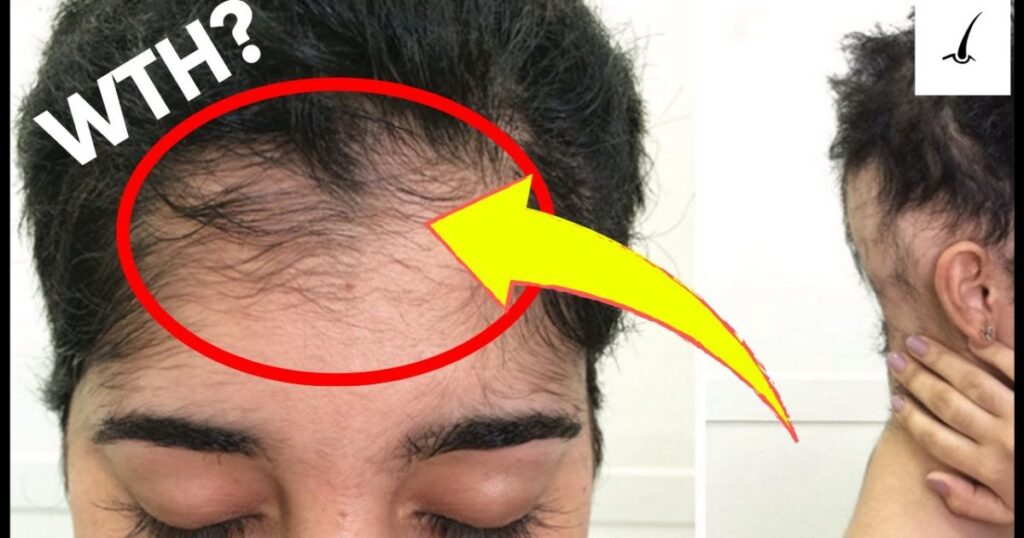
Scalp irritation:
Some people may experience redness, itching, or flaking of the scalp. This is usually mild and can be minimized by using a lower concentration of minoxidil or switching to a foam formula.
Unwanted hair growth:
Minoxidil can stimulate hair growth in areas where it’s not intended, such as the face or neck if it comes into contact with these areas. Be careful during application.
Heart palpitations:
Although rare, some individuals may experience heart palpitations as minoxidil can be absorbed through the skin into the bloodstream. If you have a history of heart issues, consult your healthcare provider before using minoxidil.
Dizziness or lightheadedness:
In some cases, minoxidil can cause dizziness or lightheadedness. If you experience these symptoms, discontinue use and seek medical advice.
Chest pain or rapid heartbeat:
Severe side effects like chest pain or a rapid heartbeat are extremely rare, but they should be taken seriously. If you experience these symptoms, stop using minoxidil and seek immediate medical attention.
Minoxidil: A Temporary Solution to a Permanent Problem
It’s important to recognize that minoxidil is a temporary solution for hair loss. While it can be effective in promoting the growth of new hair and improving hair thickness, it does not address the underlying causes of hair loss, which can be genetic, hormonal, or related to various health conditions.
If you’re experiencing significant hair loss, it’s advisable to consult a healthcare professional to determine the cause and explore potential long-term solutions. These may include prescription medications, hair transplant surgery, or other treatments that can address the root causes of hair loss.
Frequently Asked Questions
Can I color my hair while using minoxidil?
Yes, you can color your hair while using minoxidil. Minoxidil primarily affects the scalp and doesn’t change the color of your existing hair. Just be sure to wait for minoxidil to absorb into your scalp before applying hair dye to avoid any potential issues.
Will minoxidil alter the color of my existing hair?
No, minoxidil won’t change the color of your current hair. It stimulates the growth of new hair, which may be darker, but it doesn’t affect the color of your existing strands.
Are there any special precautions when dyeing hair with minoxidil use?
The main precaution is to avoid direct contact between minoxidil and freshly dyed hair. Wait for minoxidil to absorb into your scalp before applying hair dye to prevent any unwanted reactions.
Can I style my hair while using minoxidil?
Yes, you can style your hair as usual when using minoxidil. It doesn’t interfere with styling products or techniques.
Is minoxidil a permanent solution for hair loss?
No, minoxidil is a temporary solution. It can promote the growth of new hair, but you need to continue using it to maintain results. If you have concerns about hair loss, it’s best to consult a healthcare professional for personalized advice.
Conclusion
In conclusion, minoxidil itself does not alter the color of your hair, and it is generally safe to dye your hair while using this medication. However, it’s essential to take precautions to avoid any potential issues, such as direct contact between minoxidil and freshly dyed hair.
Additionally, remember that minoxidil is a temporary solution for hair loss, and results may vary from person to person. If you have concerns about your hair or are considering using minoxidil, it’s always a good idea to consult a healthcare provider for personalized advice and guidance.
